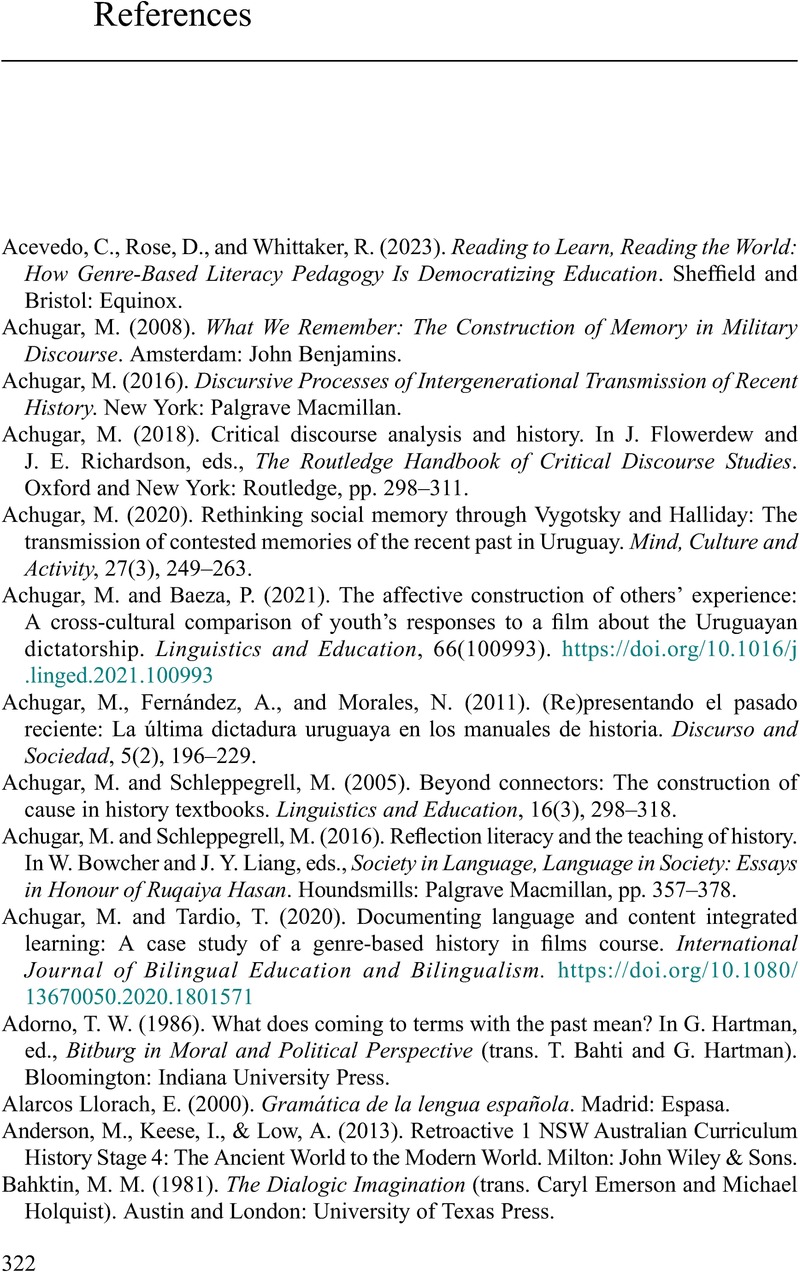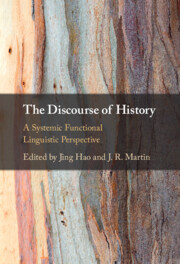Book contents
- The Discourse of History
- The Discourse of History
- Copyright page
- Contents
- Figures
- Tables
- Contributors
- Preface
- 1 Building Historical Knowledge through Language: A Systemic Functional Linguistic Perspective
- 2 Cultivating a Critical Gaze: Managing Technicality in Ancient History Teaching
- 3 Cultivating the Value of Democracy in History Teaching
- 4 Interpreting History: Valuing Events in a Postcolonial World
- 5 Coordinating Meaning: Scaffolding Teaching/Learning in Pedagogic Discourse
- 6 Explaining What Happened: Logical Metaphors in Spanish History Textbooks
- 7 Negotiating Values through Historical Evidence
- 8 Historical Empathy: Learning to Care about Others’ Suffering through Film
- 9 History in the Arts: Exploring the Past to Cultivate Students’ Gaze
- 10 Describing and Taxonomising the Phenomena of a Glorious Past
- 11 Representing Minority History in a Multi-Ethnic Country
- 12 Expressing Attitudes in Ancient Chinese History
- References
- Index
- References
References
Published online by Cambridge University Press: 16 May 2024
- The Discourse of History
- The Discourse of History
- Copyright page
- Contents
- Figures
- Tables
- Contributors
- Preface
- 1 Building Historical Knowledge through Language: A Systemic Functional Linguistic Perspective
- 2 Cultivating a Critical Gaze: Managing Technicality in Ancient History Teaching
- 3 Cultivating the Value of Democracy in History Teaching
- 4 Interpreting History: Valuing Events in a Postcolonial World
- 5 Coordinating Meaning: Scaffolding Teaching/Learning in Pedagogic Discourse
- 6 Explaining What Happened: Logical Metaphors in Spanish History Textbooks
- 7 Negotiating Values through Historical Evidence
- 8 Historical Empathy: Learning to Care about Others’ Suffering through Film
- 9 History in the Arts: Exploring the Past to Cultivate Students’ Gaze
- 10 Describing and Taxonomising the Phenomena of a Glorious Past
- 11 Representing Minority History in a Multi-Ethnic Country
- 12 Expressing Attitudes in Ancient Chinese History
- References
- Index
- References
Summary

- Type
- Chapter
- Information
- The Discourse of HistoryA Systemic Functional Linguistic Perspective, pp. 322 - 337Publisher: Cambridge University PressPrint publication year: 2024



